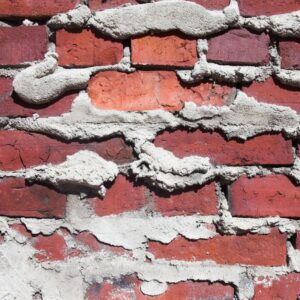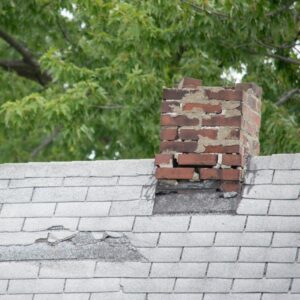You’re noticing your chimney is in rough shape, so you go to your handy-dandy search engine, type in “fireplace experts near me,” and… are hit with a flood of results that completely overwhelm you.
What you need is someone who can handle all types of masonry chimney repair services, and if you’re reading this blog, you’re in luck… because the Smalling Masonry crew has a strong reputation throughout Indianapolis, Hamilton, Zionsville, Atlanta, and more for providing just that.
One crucial aspect of chimney masonry care is tuckpointing. But what is chimney tuckpointing? And why is it important? We’ve got all the answers.
If you live in or near Indianapolis, rely on Smalling Masonry for all of your masonry-related needs.
What Is Chimney Tuckpointing?
 Tuckpointing, also known as repointing, is the process used to restore damaged or old masonry by repairing the mortar joints between the bricks or stonework. Over time, weather exposure and other environmental factors can cause the mortar to deteriorate, leading to cracks and gaps.
Tuckpointing, also known as repointing, is the process used to restore damaged or old masonry by repairing the mortar joints between the bricks or stonework. Over time, weather exposure and other environmental factors can cause the mortar to deteriorate, leading to cracks and gaps.
Tuckpointing involves the removal of damaged mortar and its replacement with new mortar that matches the original in both color and texture.
What is masonry mortar? In order to understand the importance of chimney tuckpointing, it’s crucial to understand the role that mortar plays in your chimney’s structure. Mortar has a starring role when it comes to the integrity of your chimney. It is responsible for binding the stones or bricks of your chimney, and it also prevents moisture from getting in.
Tuckpointing is an effective way to help strengthen your chimney’s structure and reduce the risk of further damage that could result in more costly repairs.
How Is Chimney Tuckpointing Done?
Chimney tuckpointing is a complex process that requires skill and experience.
- Inspection: The first step in tuckpointing is to inspect the chimney and determine the extent of the damage.
- Preparation: The chimney is then prepared for tuckpointing by removing any loose mortar, cleaning the surface of the chimney, and creating a smooth surface for the new mortar.
- Mixing the Mortar: The next step is to mix the mortar to match the color and texture of the existing mortar. This can be an intricate and time-consuming process, especially if your current mortar is on the older side.
- Applying New Mortar: The new mortar is then applied to the joints using a trowel. The joints are carefully filled, then any excess mortar is removed to create a clean, uniform finish.
- Finishing: Once the mortar has been applied, it’s left to dry and cure for several days. After drying, the chimney exterior is cleaned to remove any excess mortar.
Why Is Chimney Tuckpointing Important?
Chimney tuckpointing is essential for ensuring the longevity of your chimney. Here are some of the reasons why it is so important:
✔ Prevents Water Damage
Cracks and gaps in the mortar can allow water to seep into the chimney, leading to water damage and structural problems.
✔ Improves Energy Efficiency
Gaps in the mortar can allow air to escape from your home, leading to increased energy costs.
✔ Enhances Curb Appeal
Tuckpointing can improve the appearance of your chimney, enhancing the curb appeal of your home and boosting its overall value.
How Do I Know If My Chimney Needs Tuckpointing?
Chimneys that show signs of defects or damage are often prime candidates for chimney tuckpointing. As a homeowner, being aware of the signs of chimney mortar damage can help you be proactive in getting a certified and experienced chimney professional – like the crew here at Smalling Masonry – out to restore your system. Common signs of mortar and chimney damage are:
 Cracked Mortar: If you notice any cracks, no matter how small, this warrants a chimney inspection by a qualified chimney professional. Even the most minute cracks can be responsible for letting water seep into the masonry, causing extensive damage over time.
Cracked Mortar: If you notice any cracks, no matter how small, this warrants a chimney inspection by a qualified chimney professional. Even the most minute cracks can be responsible for letting water seep into the masonry, causing extensive damage over time.- Flaking Mortar or Spalling: Spalling is a term used to describe chimney bricks that have begun to flake and crumble. It can also cause bricks to become loose – and even fall out! It is typically caused by harsh weather and fluctuating temperatures, which we’re definitely not immune to here in Indianapolis.
- Damaged Drywall: If you notice damage to drywall in your home around your chimney or fireplace, a leak in your chimney due to cracked or broken mortar joints could be to blame.
- Discolored Mortar: Is your chimney masonry looking discolored? This can be a clear signal that it is deteriorating. You may notice it becoming lighter or experiencing stains.
- Rusty Metal Components: If you notice rust stains in your firebox, on your chimney cap or chase cover, or on your damper, chances are you have a leak of some sort in the masonry of your chimney.
It’s important to be aware of the signs above and to check the masonry of your chimney on a regular basis. If you notice any concerns, be sure to call our chimney professionals out to inspect your chimney and discuss how we can get things back into good shape. Dial 317-903-8121 or reach out to us online now.
Masonry Tuckpointing FAQ
Q: How often should I have my chimney tuckpointed?
A: It’s recommended to have your chimney inspected annually and tuckpointed completed, as needed. While masonry can last a lifetime, touching it up with tuckpointing is usually required every one or two decades.
Q: Can I do my own chimney tuckpointing?
A: Tuckpointing is a complex process that requires skill and experience. It’s best to hire a professional tuckpointer to ensure the job is done correctly, and so that your results look smooth and seamless.
Q: How long does chimney tuckpointing take?
A: The time it takes to tuckpoint a chimney depends on the extent of the damage. A typical tuckpointing job can take anywhere from a few days to a week. Once we inspect your system, we can give you a more accurate timeline.
Book Your Masonry Repairs With Us
Now that you know what chimney tuckpointing is, how it’s done, why it’s important, and what to look for, you can make informed decisions about the maintenance of your chimney. Remember to hire a certified and licensed chimney company like Smalling Masonry to annually inspect your chimney and address any masonry repairs, as needed. This will help to ensure the longevity and safety of your chimney.
Our friendly and expertly trained professionals are standing by ready to answer any questions and meet all of your chimney and fireplace needs. Call 317-903-8121 or schedule online today.
